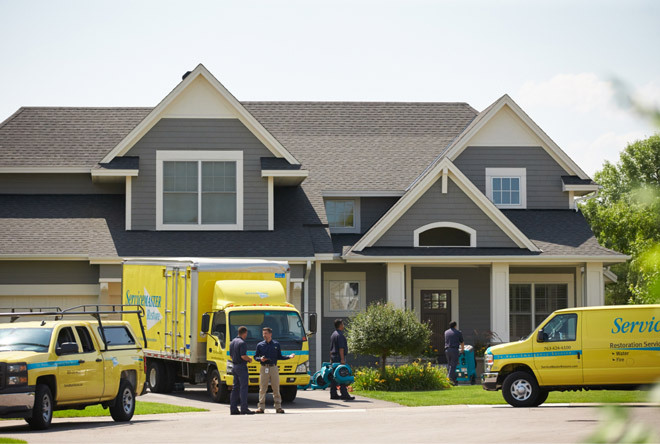Commercial Air Duct Cleaning
Your facility's air quality is very important, especially considering the fact that indoor air quality can be problematic for employees and employers in Southwest and Central Kansas. Our windy weather and agrarian-based economy means that more dirt, dust, pesticides, chemicals, molds, and fine particulate matter (including nitrates and sulfates), organic chemicals, metals, and soil/dust particles enter our buildings every day. The EPA is especially concerned about smaller particles that we cannot see and how they adversely affect our health. These particles are abundant in Kansas and may be causing a loss of business productivity and efficiency.
The following is directly from the EPA's website:
The size of particles is directly linked to their potential for causing health problems. EPA is concerned about particles that are 10 micrometers in diameter or smaller because those are the particles that generally pass through the throat and nose and enter the lungs. Once inhaled, these particles can affect the heart and lungs and cause serious health effects. EPA groups particle pollution into two categories:
- "Inhalable coarse particles," such as those found near roadways and dusty industries, are larger than 2.5 micrometers and smaller than 10 micrometers in diameter.
- "Fine particles," such as those found in smoke and haze, are 2.5 micrometers in diameter and smaller. These particles can be directly emitted from sources such as forest fires, or they can form when gases emitted from power plants, industries and automobiles react in the air.
REALITY CHECK: Poor ventilation and/or the constant accumulation and re-circulation of invisible harmful particulates can be costly to a business or organization. Some employees may be especially likely to develop colds, flu-like symptoms, headaches, infections or breathing and respiratory problems. This can lead to sick time and a direct loss of productivity, which costs businesses in a real way. Poor air quality may also exacerbate existing health problems such as allergies and asthma.
Mitigating Risk by Cleaning the Ducts
A freshly cleaned HVAC system will run more efficiently than a dirty one, which will result in lower utility bills and a cleaner environment. Dust, dirt, pollen, animal dander and airborne contaminants re-circulate through the HVAC system when the furnace or air conditioner are running. Over time, miniscule particulates may build up inside your ductwork, making your system a potential breeding ground for additional bacteria, fungus, mildew and even molds. Those who suffer from allergies, asthma or other respiratory ailments, especially children and the elderly, may be vulnerable to the effects of indoor air pollution.
Air Duct Cleaning by ServiceMaster
If you choose ServiceMaster Rapid Response to clean your HVAC system (and we hope you do!), we will do so in the following manner.
- First we remove all vent covers (including the return) and thoroughly clean them and put them back in place. The most effective way to clean air ducts and ventilation systems is to employ "source removal" methods of cleaning. This requires ServiceMaster to place the HVAC system under negative pressure through the use of a special high powered vacuum utilizing High Efficiency Particulate Air Filters which are capable of removing over 99.97% of airborne contaminants (down to the size of .3 microns). To put this into perspective, the period at the end of this sentence is over 397 microns wide. This HEPA filtration system is able to remove smoke, dust, viruses, bacteria and fumes none of which are visible to the human eye. In order for the vacuum to create negative air pressure on the system an access hole is cut into the return side of the HVAC.
- The vacuum is then connected using a connection collar and the vacuum is turned on. While the vacuum draws air through the system, powerful agitating devices combined with positive air pressure are inserted into the ducts to dislodge any debris that might be stuck to interior surfaces. This method propels debris and particulate down the ducts to the vacuum, and the HEPA filter removes them from the system and home.
This push/pull cleaning technique is the most effective source removal method currently available and is the ONLY method approved by the National Air Duct Cleaning Association. After the entire ductwork has been cleaned, the ductwork can then be sanitized if necessary and the furnace can be air washed or otherwise cleaned as recommended.
WHEN IT'S ALL OVER: Once the entire cleaning process is completed, all access holes are completely closed and insulated sealing off any leaks, making the duct systems easily accessible for repeat cleaning.


